Thomas Cromwell’s name comes up a lot during much of Henry VIII’s later reign. He was a man who pushed for the religious reformation and temporarily sided with Anne Boleyn. However, he was a man after power and it seems he was willing to anything to gain that; along with the religious reformation. He condemned Anne Boleyn and five men to their deaths in 1536 but saw the tables turn in 1540, when he was finally beheaded for heresy, among other charges.

Thomas Cromwell: A Man Willing to Do Anything for Power?
Thomas Cromwell is a man known for arranging the execution of Anne Boleyn. Was this just a play for power or did he believe the woman was guilty of treason?
The Rise of Thomas Cromwell
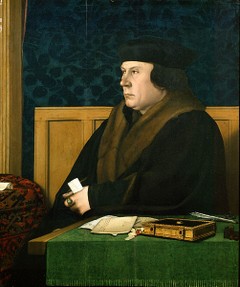 Born around 1485, Thomas grew up as the only son of three children – his sisters Katherine and Elizabeth. However, other than that, very little is known about him. He was given a place in the King’s Council, by Cardinal Wolsey, in 1529 and then a year later was appointed to the Privy Council. Two years later he became the State Minister and that was his title until his execution eight years later.
Born around 1485, Thomas grew up as the only son of three children – his sisters Katherine and Elizabeth. However, other than that, very little is known about him. He was given a place in the King’s Council, by Cardinal Wolsey, in 1529 and then a year later was appointed to the Privy Council. Two years later he became the State Minister and that was his title until his execution eight years later.
He was a reformer, which should have meant that he was on the side of Anne Boleyn. However, she was too intelligent and powerful for his liking. He wanted to be a person who the King turned to for political debates but it was his wife. Yet, at first, it seems that they did get along and Thomas was a supporter of the marriage.
In February 1533, Thomas created a bill that meant all rights for appeals through Rome were restricted. This allowed Henry VIII and Anne Boleyn to marry. He was a prominent figure throughout these years. In the end, it was his reformist views and want for England to become a reformist country that led to his downfall. While Henry VIII wanted a way to marry Anne Boleyn, he arguably only broke away from Rome to get everything he wanted.
Thomas Cromwell Against Anne Boleyn
By 1536, Thomas Cromwell and Anne Boleyn no longer saw eye-to-eye on matters. The most important was during the Act for the Suppression of the Lesser Monasteries. As part of the reformation, the monasteries around England were to be closed and the money would go to the Royal coffers. Anne Boleyn never agreed to this. Anne was a very charitable and generous person and wanted the money to go to the poor people of England and into education.
Unfortunately for Anne, she went about the situation in the wrong way. By this time, Henry VIII was starting to grow tired of her. She had miscarried two babies – at least one of those was a boy – and she was often winning in debates with the King. Henry’s eyes were wandering to a Lady-in-Waiting, Jane Seymour, and he wanted a way to remove Anne to marry his new fancy. The rift that was created between Anne and Thomas was perfect for Henry’s needs.
Anne instructed her chaplains to inform everyone about the way the money was being used. Her almoner, John Skip, publically denounced Thomas and made him her enemy. Thomas was able to gain the King’s support and it was just two months later that he started the proceedings to remove Anne Boleyn from the throne – along with her powerful faction from Court.
Did Thomas Cromwell Fabricate Evidence?
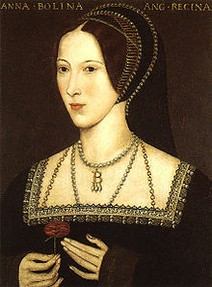 Personally, I don’t believe that Anne Boleyn or the men accused of adultery were guilty of their crimes. Looking at the evidence Thomas provided, it had to have been fabricated. The dates given were at times that Anne was not in London, was pregnant or had just give birth to Elizabeth/had the miscarriages. However, Thomas needed a way to remove Anne and the Boleyn faction and making her guilty of treason and adultery was the best option.
Personally, I don’t believe that Anne Boleyn or the men accused of adultery were guilty of their crimes. Looking at the evidence Thomas provided, it had to have been fabricated. The dates given were at times that Anne was not in London, was pregnant or had just give birth to Elizabeth/had the miscarriages. However, Thomas needed a way to remove Anne and the Boleyn faction and making her guilty of treason and adultery was the best option.
Thomas also ensured that the jury were men who owed money to the King and others in court or were trying to get back in the King’s favour. They simply had to find Anne and the other men guilty to avoid prison or condemning themselves to the same fate.
But how did Thomas get around the fabricated evidence? Simple: those who were convicted of treason would not know the evidence against them before going into the courtroom and they were not allowed a defence. They would have been told of the charges at the start of the trial and would have quickly had to think of reasons why the evidence was not true; very hard when you’re under so much pressure to save your own life!
Anne and George Boleyn were tried a day after the other four men – Henry Norris, Francis Weston, William Brereton and Mark Smeaton – who had already been found guilty. George was tried before Anne and found guilty so it was a foregone conclusion that she would be found guilty too. Thomas had gained everything that he wanted and the King was happy.
Thomas Cromwell Continues to Rise in Power
Over the next few years, Thomas Cromwell gained more responsibilities and power. He became the Lord Privy Seal in July 1536; a position that was originally held by Anne Boleyn’s father. Days later he gained the title Baron Cromwell of Wimbledon.
The religious reformation was still important to him and he continued to help Thomas Cranmner, the Archbishop of Canterbury, to make the changes and encourage Henry VIII to allow the changes. He was involved in creating the Ten Articles.
While rising in power, Thomas gained many enemies, especially those in the north. Due to his reformist views and the suppression of the monasteries, the English people of the north view him as an evil counsellor of the King. This led to more reforms, which just angered them more. Unfortunately, for the north, this was still a time that Thomas Cromwell’s opinions mattered to King Henry VIII and were supported.
Thomas Cromwell Starts to Lose Favour
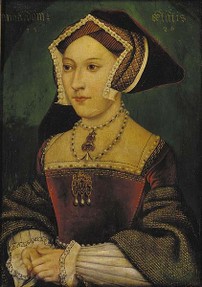 While pushing for the reformation, Thomas started to lose political power. He had gained enemies in the Privy Council, who wanted to stop all the reformations; many were Catholics who wanted the old ways to return. Henry continued to support him though through most of these years and saw that the religious reformation happened. Henry was happy with Jane Seymour and she was expecting their first child, who Henry believed to be a boy.
While pushing for the reformation, Thomas started to lose political power. He had gained enemies in the Privy Council, who wanted to stop all the reformations; many were Catholics who wanted the old ways to return. Henry continued to support him though through most of these years and saw that the religious reformation happened. Henry was happy with Jane Seymour and she was expecting their first child, who Henry believed to be a boy.
However, Henry started to have doubts about the reformation, particularly after the death of Jane Seymour. Henry was always against the reformist views until he needed it to secure his divorce from Catherine of Aragon. It may have been that he regretted the reformation since he didn’t need it in the end – in his eyes, it led to him marrying a traitor. While Thomas continued to push for the reformation, by 1539 Henry VIII started holding back on the reforms.
The Fall of Thomas Cromwell
His push for reformation ultimately led to his fall and execution. When Henry VIII was ready to marry again in 1539, Thomas pushed for a politically-inspired marriage to the German princess, Anne of Cleves. Germany was a reformist country and it would help to increase the support for the reformations in England. Henry VIII agreed upon seeing a painting by Hans Holbein but later did not like the look of her; however, they married on January 6, 1540 when Henry realised that it was too late to back out of the marriage.
This disappointment in his new bride led to anger aimed at Thomas. He was arrested on June 10 of that year and charged with treason. Thomas may have known that this was going to happen because he had already made sure that all his affairs were in order before being sent to the Tower of London.
While he went through a trial, Henry VIII did not allow Thomas Cromwell to be executed quickly. He wanted to annul his marriage to Anne of Cleves and needed Thomas’ help to do that. Thomas wrote his last letter around June 28 to confirm that Anne had previous been betrothed and that the marriage was invalid. The King gained his annulment.
Thomas Cromwell was sentenced to death. Since he was convicted of both treason and heresy, he should have been hanged, drawn and quartered or burned at the stake. In the end, he was executed by beheading, possibly due to his previous relationship with Henry VIII. On the scaffold, he confessed to being a sinner but not to the crimes that he was convicted of, which was the regular occurrence at executions.
Many historians view Thomas’ execution as karma for putting an innocent woman and five innocent men to death just four years earlier. However, it is just a sad end to a tale of a man who wanted power and a full religious reformation.
You might also like
England Under the Tudors: Would King Edward VI Have Been a Goo...Edward VI reigned between 1547 and 1553 when he was just a boy. It's hard to ...
Lady Jane Boleyn: Vindictive Woman or Pawn in a Plot?Jane Boleyn is known for her part in bringing down the Boleyn faction. How mu...
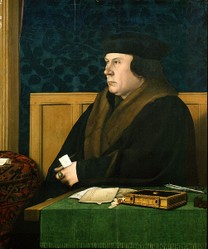




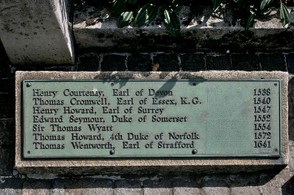




 Alternate History: What If Mary I Had a Child?on 01/26/2015
Alternate History: What If Mary I Had a Child?on 01/26/2015
 Francis II of France Dies: Mary, Queen of Scots Returns Homeon 12/05/2014
Francis II of France Dies: Mary, Queen of Scots Returns Homeon 12/05/2014
 Does Writedge Pay? Payment Proofon 12/03/2014
Does Writedge Pay? Payment Proofon 12/03/2014
 Alternate History: What If Lady Jane Grey Was Not Deposed?on 11/11/2014
Alternate History: What If Lady Jane Grey Was Not Deposed?on 11/11/2014
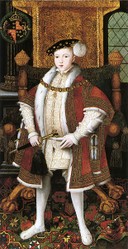

Comments
Very scary to be against someone with such ambitions back then. Thank you - for reading and commenting. Glad you enjoyed it.
Oh my, Greed which is a cousin to power is the root of all evil indeed. Well written. :)K